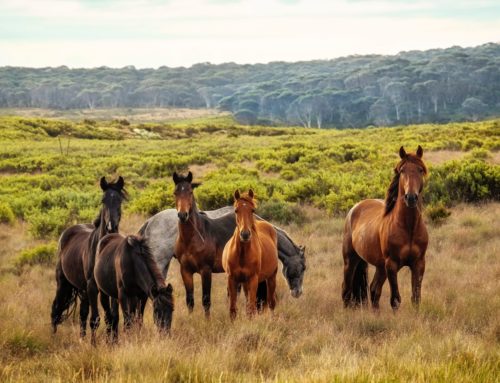Herbs for Health Q&A
For far too many of us, gone are the days when we turned to our grandparents or great-grandparents for advice on the best ways to attend to the bumps and bruises of everyday life. We look to Google for answers, or ask the neighborhood pharmacist for the best pill we can take to ease a stomachache or help us fall asleep. Why is that, when everyone knows a cup of chamomile tea will help us wind down and that a bit of ginger will soothe an upset stomach?
Our great-grandparents didn’t have access to the Internet or even a corner drugstore when they were young and taking care of their families. They relied on collected wisdom, common sense and the plants and herbs that grew in the kitchen garden or in the fields around their homes. And science has proven that their children were likely more healthy than ours.
Nature still has the answers.
We turned to renowned herbalists Dr. Jim Jenks and Joan Vandergriff for their suggestions on returning to herbs for health and healing.
What are herbs and how do they benefit the body?
{Jim} “Humans need all sorts of minerals, enzymes and vitamins to function at our very best. Herbs are special foods, provided by our Creator, to supply them. They always work! They’re food for the body, not toxic substances.”
{Joan} “Herbs are old-fashioned remedies that our mothers and grandmothers used. They tasted awful but they cured almost everything. Taking herbs is a lot like eating green beans, cauliflower and other healthful foods at mealtime. Think of them as fuel. Take spirulina for example. It’s a great source of easily digested vegetable protein and is also rich in vitamins, minerals, nutrients and antioxidants that can help protect our cells from damage.”
Most people are aware of herbal teas. What are some other ways we can use herbs for health and healing?
{Joan} “Teas are great, but some herbs, like dandelion, are too bitter to drink. Those are much easier to take in capsule form. Some herbs are sold as liquid extracts. For scrapes and strains I like to make poultices and rubs. Lobelia has a long history as an herbal remedy for respiratory conditions, so we mix it with red raspberry liquid and rub it on the chest during the colder months.”
How would you recommend getting started with herbs?
{Jim} “If a person is looking to support a specific issue, we recommend starting with a lot of an herb to fill that need. Build the body’s reserve by taking it long enough to balance any deficiencies, and then reduce the dose and continue long-term for maintenance. Our guideline recommend one capsule for every 10 pounds of body weight, spread out over the day during building, then just one or two a day for maintenance.
I had a heart attack 30 years ago and it hurt, so I’m trying to avoid going through that again. I took lots of hawthorn for my condition. I weighed 180 pounds at the time, so I took 18 capsules throughout the day. Today I take just 2 capsules a day, and I never miss it!”
What are some of your favorite herbs?
{Jim} “Well, that depends on the situation. When I returned to Berkeley for homeopathic training, I took gotu kola to help me remember things. For parasites, I recommend starting with black walnut, then rotating to garlic, herbal pumpkin or Para-Cleanse. Capsicum and ginger are great for circulation. Papaya can be added to other herbs to aid with assimilation and digestion.
My two favorite herbs are kelp and red raspberry. Kelp is a seaweed rich in iodine, calcium and other minerals that can be of great value in maintaining a healthy heart. With red raspberry we use the leaves, not the fruit, bark or root as with other herbs, for women’s health. It’s been used to support pregnancies and for pain and discomfort during menses for centuries, and we still use it today.”
{Joan} “I got started in herbs with dandelion and I still recommend it today. It’s loaded with vitamins A, B, C and D as well as minerals such as iron, potassium and zinc. It’s a wonderful support for the liver. I also love bee pollen, which I consider God’s energy pills. This one tastes great and has amino acids, protein, carbohydrates, minerals, vitamins and EFAs.
I’ve recently added turmeric/curcumin to my list of recommendations. It comes from India and has been used in Ayurvedic medicine for thousands of years. It helps with inflammation and supports the immune, circulatory and glandular systems.
And there’s always Slippery Elm. There’s a wonderful story about George Washington’s troops literally surviving on slippery elm porridge at Valley Forge. It comes from the inner bark of the slippery elm tree and contains mucilage, which becomes a slick gel when mixed with water. It coats and soothes the mouth, throat, stomach and intestines. I like to add it to my daily protein shake and to make it into cereal for children.”
Which Might Be Right for You?
Cascara Sagrada
- Natural herbal laxative
- Cleanses intestinal tract
- Supports a clean colon
Psyllium Hulls
- Supports the intestinal system
- Is an excellent source of soluble fiber
- Encourages normal bowel movements
Hydrangea
- Supports the urinary system
- Possesses natural solvent qualities
Pau d’Arco
- Strengthens the immune system
- Assists in the detoxification process
- Nourishes the blood
- Supports the circulatory system
Kelp
- Provides natural trace minerals, including iodine, for glandular support
- May help maintain levels of energy
Hawthorn Berries
- Supports heart muscle function
- Provides circulatory system support
Slippery elm
- Provides mucilage to soothe the digestive tract
- Helps relieve digestion discomfort
